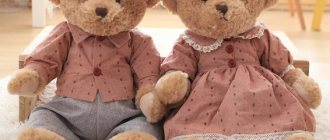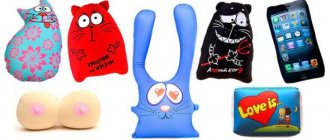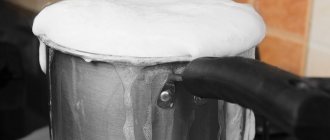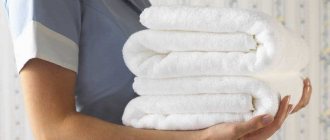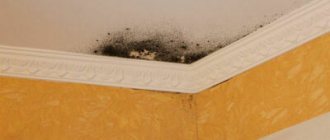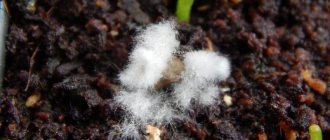What child doesn't love rubber bath toys? The classic yellow rubber duck is probably in every home. But here’s the problem: children not only love to cuddle them, but also to put them in their mouths. But such rubber toys pose a huge danger to a child’s health: they often become moldy inside. So will we now have to throw away all the bath toys, depriving the kids of pleasure? There is an exit! Find out how to keep your water baths safe by easily cleaning your favorite toys from annoying fungus.
Mold and how to deal with it
Yes, mold inside such toys is a ubiquitous phenomenon, so you shouldn’t blame yourself for having it at home. The problem is in the very design and construction of these toys, which seem to be designed to favor the development of mold spores! Warmth and moisture are an excellent environment for their reproduction. But don’t rush to throw away your child’s precious sources of joy. Removing mold from them is a simple matter and is done manually. So, let's look at several options that will help you cope with this trouble.
Camphor balls
- Borax. One glass of powder is dissolved in 2.5 liters of water, a brush is dipped into the resulting solution, with which mold is removed. There is no need to rinse the surfaces after treatment; after drying, the borax solution will serve as protection.
- Hydrogen peroxide. A 3% peroxide solution can be poured into a spray bottle and treated with mold. After 10 minutes, wash the surface with soapy water.
- Anthracene oil will help get rid of fungus for a long time, but has a persistent unpleasant odor.
Add 1 cup of borax to 2.5 liters of water. After cleaning the surface of the bathroom, apply the resulting composition; it does not need to be rinsed, but you need to wipe the surface with dry paper.
Methods for removing fungus
You can remove mold using either bleach or vinegar. Both of these approaches rely on allowing the toys to sit in solution for some time. Ideally, they need to be boiled in it.
Rare 20,000-year-old Paleolithic blade found in China
The authorities of Montenegro have decided to simplify entry rules for tourists
Blue or yellow: how to calculate your interior color by date of birth
So, you can sterilize toys in a solution of water and vinegar in a 1:1 ratio. If the option of soaking the toy is more suitable for you, then ½-1 glass of white vinegar or chlorine bleach should be diluted with three liters of water. As for how long to soak toys in a vinegar or bleach solution, it can take anywhere from an hour to an entire night, depending on how soon you need the toy.
However, it should be noted that some toys cannot be cleaned using these methods, as the manufacturer's instructions prohibit it. Otherwise, vinegar or bleach may cause minor or significant damage to the integrity of the toy. Be careful!
If mold appears again
If you have removed all the mold from the surface of the finish and taken all measures to prevent its reappearance, but after some time the fungus in the bathroom makes itself felt again, most likely the spores have penetrated under the finish and the fungus is growing there. This happens when the necessary antiseptic treatment was not carried out at the repair stage. To eliminate all pockets of mold, you will have to carry out cosmetic repairs in the bathroom with a complete replacement of the old finish.
- The old covering (tiles, panels, paint) on the affected area is dismantled.
- If necessary, the plaster must also be removed.
- The area must be cleaned with detergent and treated with an antiseptic.
- After drying, the antiseptic is reapplied.
- The surface is thoroughly washed with water and dried with a hair dryer.
- A primer with an antiseptic additive and a waterproofing mixture are applied to the wall.
- Now you can begin finishing, not forgetting to treat all seams and joints with water-repellent sealant.
Tip: You should throw away all items that have come into contact with mold (gloves, brushes, sponges).
Removing cleaning agent residues
So now you have rubber duckies with no mold inside, but another problem arises: the entire toy is now covered in bleach or vinegar, which definitely won't do your child any good if they pick it up. Everything is quite simple here. Place the duck in the dishwasher on the top rack and wash it as you would normally wash dishes. In fact, you should not neglect to wash the toy at least once a week - this will help keep it clean and protect the child from all sorts of nasty things that are on its surface and definitely should not be in the baby’s mouth and hands or in the bath water.
20 ml of peroxide per liter of water: 5 tips for growing strong pepper seedlings
Smart Clothing: Ingenious Tricks to Save Significant Time
Trampled the mentor: what does Patlakh do, who was kicked out of the show “Dancing”
Ventilation of rubber bath toys
Make additional holes for water drainage and ventilation in rubber bath toys. If you want them to last longer. The advice concerns rubber toys a la “with a hole in the right side.” The fact is that over time (not too long, by the way), black mold can grow inside such toys, which begins to spit out of the toys during bathing and which is extremely difficult to get rid of. It can cause allergic reactions, and nothing pleasant at all. Therefore, if you do not plan to change the set of toys every few months, make additional holes in them in those places where water can stagnate (ears, paws, tail) and do not forget to pour the water out of them and dry them after bathing. This, however, can affect the swimming, spitting and whistling properties, but if you don’t get carried away with the holes, there won’t be much difference.
How much to hole them?
I used nail scissors to make holes a couple of millimeters in diameter. One toy stopped swimming - a starfish, which had 5 new holes in the corners. But now water pours out of it in a cool way) But here it is almost flat. If the toys are more voluminous, and the rubber is not too soft, at most they will sink a little into the water. In general, it’s better to experiment, of course.
Firstly, allergic reactions are not the worst thing that black mold can cause. Various types of aspergillosis are much more unpleasant.
Secondly, there are WHO recommendations for combating mold - they, for example, suggest fighting it with soapy water (which is already enough in the bathtub), and then keeping it dry. So it makes sense not only to rinse such toys after bathing, but also to store them outside the bathroom when not in use.
Although, on the other hand, mold is excellent at surviving dry periods and blooming again after contact with moisture, so even rinsing and drying will most likely not help get rid of the spores. Therefore, it still makes sense to change toys regularly.
It would be reasonable, on the contrary, to somehow tightly seal all the holes leading into the cavity of the toy when purchasing it, and then the mold inside it will not be terrible. But just as the “swimming, spitting and whistling properties” are lost when perforating, so they will be lost when sealed.
Advice from Pechenenko from the site By the way, yes! How do you ventilate your toys and how often do you change them?
jenet.info
Mold Prevention
If you notice that mold appears in toys or on any other surfaces in the bathroom and home, then you should do not just cosmetic removal of the fungus, but its complete removal. After all, mold poses an incredible danger to human life. Mold toxins can activate the formation of cancer cells; they also increase the risk of developing cardiovascular diseases. In addition to allergies, mold can cause stomatitis, mycosis of the nasal cavity and a number of respiratory diseases.
How to get rid of mold in the bathroom at home
- Ozonation. The method allows you to remove not only visible mold colonies, but also deep-seated spores, including in hard-to-reach places. Ozonation is carried out using professional equipment, so for such processing you will have to call specialists to your home. The procedure lasts 30-60 minutes and will require 2-3 treatments per week (depending on the depth and area of mold damage). Additionally, ozone eliminates odors, disinfects surfaces, and kills insects.
If mold appears on the surface of the tile, it is enough to treat its surface with one of the above products. But getting rid of the fungus that has settled in the seams between the tiles can be very difficult.
Making toys safe
When it comes to toys, there are two ways to solve this problem. The basis of these two methods is to prevent moisture from getting inside the toy. So, if you don't want to go through the hassle of sterilizing or soaking your ducks in a solution too often, try sealing the holes where the water gets in with hot glue. This way you can obviously stop moisture from getting into the inside of the toy. It is worth noting that before sealing the hole, it is important to make sure that there is absolutely no water left inside - to do this, you should dry the toy. You will also still need to check the toy from time to time to make sure the glue is tight enough to make sure it doesn't leak water! Be careful when choosing glue: it definitely needs to be non-toxic, as your child might start chewing on the toy!
As another - absolutely opposite to the first - option, you can try, on the contrary, to enlarge the hole in the rubber toy, thereby improving the air circulation inside it. The water will drain easily, reducing the moisture inside that mold loves so much. In addition, this will make it possible to access the inside of the toy: you can easily clean it with a cotton swab or paper towel. Try it!
It is important to approach the issue as responsibly as possible, because the health and safety of the baby directly depends on it. But under no circumstances should you rush to spoil your child and throw away his favorite rubber bath toys. Bathing toys make bathing more fun, so don't deprive your baby of this joy. Let's work together to make bath time safe for our children!
Found a violation? Report content
How to Clean the Inside of Rubber Bath Toys
Rubber bath toys are the only way to entertain a child while bathing. They help keep your attention. If the baby is at the age when teeth are just cutting through, then you should be more careful about the cleanliness of toys, since he will certainly chew them.
Despite being in the water, they need additional care. A constant damp environment creates conditions for the development of all kinds of bacteria and mold. Fungus also develops. Therefore, clean the inside of rubber bath toys once a week.
Cleaning toys with vinegar
Let's look at the benefits of vinegar. This is an effective and harmless natural cleaner. What makes it popular is the absence of unwanted additives. Therefore, in the ranking of suitable means for cleaning children's items, it comes first.
Application:
Combine two parts warm water and one part white vinegar. The acid will dissolve dirt, so you don't have to use soap. Apple cider vinegar is also considered effective. However, regular is preferable because it is colorless and less likely to leave marks.
Excess water from inside the item is removed as far as possible. These special bath products have a hole in the bottom that makes a sound when they are squeezed.
This hole allows water to penetrate inside. This is how bacteria develop and mold appears. Therefore, it is important to squeeze out excess water and dry the items.
Toys are soaked in a vinegar solution for 10-15 minutes. To wash away dirt, it is important to ensure that the substance penetrates into the product, since dirt accumulates there.
To clean items with vinegar, it is best to use a small brush. If there are narrow areas or small holes, they are cleaned using the tip of the brush.
After manipulation, the toys are washed in water and dried. Rinse thoroughly and dry in the sun or on a dry towel before allowing your child to use them.
Cleaning in the dishwasher
Make sure the toy is dishwasher safe. It works at high temperatures, which destroys bacteria. Therefore, the label on the toy is checked to ensure that it is dishwasher safe.
Application:
Before immersion in the equipment, excess water is removed from inside the toys and dried. It is important to dry them as thoroughly as possible before placing them in the dishwasher.
Items for safety are placed in an underwear bag or in a plastic basket, if smaller, on the top shelf of the car. Soap is added as desired. Dishwasher safe detergent or capsules are acceptable.
As a natural cleaner, use a solution of one part white vinegar and three parts warm water.
All that remains is to configure and turn on the machine. You can also enable the drying option. Some models are equipped with an additional high-temperature cycle for sterilization. However, you need to be careful with this because bath toys are usually made of plastic or rubber. When heated, they melt or are damaged by temperature.
The toys should then be dried on a dry towel or in the air before being used again.
Cleaning toys with chlorine
If testing toys for mold reveals visible traces, chlorine bleach is the best way to remove harmful microorganisms and disinfect. Pay close attention to the amount of bleach in the cleaning solution. Excessive maintenance can harm the child. Due to the existing risk, the method is less preferable.
The cleaning solution is prepared from a tablespoon of chlorine bleach with a liter of water.
Toys need to be soaked in the solution. You need to press on them so that they absorb it. It should remain inside the product for several minutes.
After this, it is necessary to rinse thoroughly and rinse in a compressed state. Toys can be considered well washed and free of mold if the smell of bleach is no longer noticeable. They must be completely dry before reuse.
vsepodomu.ru
Milk, borax, chalk, lemon: arming yourself to fight mold
Stains on delicate items will come off easier if you know how to remove them in a gentle manner.
Among the gentle means are the following:
Those who don’t know how to remove mold and its smell from clothes can arm themselves with this composition. After 40 minutes, blot the stain with cosmetic pads and wash by hand. The product will not smell musty.
To combat unwanted pollution, it is not necessary to use aggressive means. Chalk is suitable for dry processing of items made from cotton and linen fabrics. They can remove the smell of mold in a wardrobe.
Chalk has absorbent properties. To combat stubborn stains, construction, school, and pharmacy detergents are used. White clay can replace chalk.
Grind the limestone mineral. To get rid of mold, sprinkle school chalk on the stains. Cover with a sheet of white construction paper. Iron with a heated iron for 10 minutes. Shake off the remaining lime and wash. This method of how to get rid of the smell of mold on various things is not suitable for shoes.
To know how to remove mold stains from fabric, you need to take into account its properties. Dirt will be washed off more easily in hot water. But you should make sure that this does not damage your clothes.
Some tips for using the products
When planning to use one or another remedy for black mold, you need to take into account a number of features. Firstly, it is impossible to remove this scourge by washing off with warm soapy water with manganese. Even if it is possible to eliminate the black plaque, disputes will remain. Having received a new nutrient medium in the form of warm moisture and the components that make up the soap, their colonies will begin to multiply even faster.
Secondly, it is impossible to avoid the re-invasion of mold after removing it mechanically. The spores will remain and continue to reproduce.
Thirdly, high positive temperatures, as well as very low ones, are not able to destroy mold spores. Their presence will only stunt growth. Once favorable conditions return, the mold will continue to grow.
Fourthly, the smallest cracks in the bathroom wall need to be repaired, and the walls that are in contact with the street should be insulated. The rugs on the floor in this room should be dry, or even better, have a warm floor here.
Fifthly, it is advisable not to dry wet laundry in the bathroom. It will become an additional source of moisture. When zonal surface treatment does not help, you will have to make repairs throughout the entire room. For this purpose, purchase products intended for use during repairs. They are added to putty, paint or whitewash.
Pay attention to primers that are based on acids and other components that have a detrimental effect on mold.
Where to look for fungus?
Even if visually you cannot immediately detect traces of the presence of mold, you should look for it in places hidden from view.
- corners of walls in contact with the bathroom;
- gaps between tiles;
- places where plumbing fixtures connect to the walls;
- under the baseboards in the area of the sink and bathtub;
- on the ceiling;
- under the rug on the floor;
- in wood paneling;
- in cups for hygiene items.
Having penetrated into other rooms, the spores, if they do not germinate, retain their ability to reproduce for a long time and are just waiting for favorable conditions.
It is impossible to completely get rid of them, but creating unsuitable conditions for their development is quite possible.
Grandmother's methods
How to remove mold from clothes that cannot be exposed to synthetic drugs?
In ancient times, people were more careful with their clothes, so removing mold from various fabrics was done using non-chemical methods:
How to get rid of the smell of mold on things using sunflower? This method is suitable for residents of rural areas. The roots of the plant are burned. The resulting ashes are placed in gauze and placed in water. After 1-2 hours, dirty clothes are washed in liquid. Sunflower ash produces a natural foam that is no different from regular synthetic powder.
How to remove old, deeply ingrained stains was known long before the advent of various synthetic preparations. Cleaned with vinegar, ammonia, turpentine, kerosene. Such methods are inferior in efficiency, but superior in safety.
How to remove odor, wash shoes, so that you can wear them with pleasure in the future? Add a small amount of natural bleaches to the water: lemon, apple, carrot juice, milk, curdled milk, yogurt.
It would be useful to take preventive measures aimed at preventing dampness in the room. Then you won’t have to think about how to remove mold from clothes and shoes and how to get rid of an unpleasant odor.
Detergents
Before using special preparations, you should use simple methods on how to remove mold from fabric. A faithful assistant is laundry soap. Pour 50 g of grated detergent shavings into a liter of warm water.
After dissolution, you should soak things in a soapy solution. Suitable for removing stains from shoes. How to get rid of an unpleasant odor?
If your shoes smell strongly not only of mold, but also of sweat, you can add lemon juice to the soap solution.
Laundry soap can replace tar soap. Removes fungal contamination, but has a strong, unpleasant odor.
Remove mold stains from clothing using bleach containing chlorine. First of all, there is Whiteness. Apply to heavily contaminated areas without diluting. Less damaged items are soaked in solutions for 20 minutes.
How to clean expensive things? Conventional synthetic products and bleaches can cause damage to the fabric and blur the tint structure. In such cases, a special approach is required. Removing stains from leather, fur, and delicate fabrics should be entrusted to professionals; this is the only way you will be able to not only clean the item, but also keep it in proper condition.
How to wash soft toys with foam?
- Complete removal of cladding on the ceiling, walls, floor.
- Elimination of pipe leaks.
- Installation of forced exhaust.
- Cleaning the base + treatment with preparations to kill mold and spores.
- Drying floor coverings in the bathroom.
- Preventive impregnation of surfaces with anti-mold agents. Drying coatings.
- Facing and other repair work.
Afterwards, it is recommended to run the wash at the highest temperature setting, without detergents.

